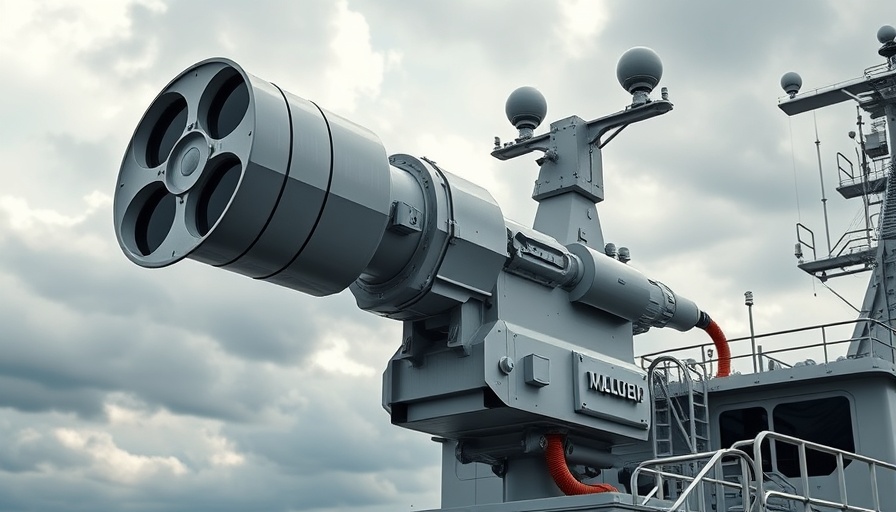
The Evolution of Naval Technology: Kawasaki's Innovative Approach
At the DSEI Japan 2025 event, a spotlight was cast on the future of naval defense as Kawasaki unveiled a cutting-edge concept for a naval version of their direct energy weapon (DEW). This unveiling marks a pivotal moment for Japan, positioning itself among a select group of nations spearheading advancements in DEW technology. The initiative underscores the growing importance of modern warfare capabilities, particularly in addressing new aerial threats.
Understanding Direct Energy Weapons
Direct energy weapons utilize focused energy, such as lasers, to neutralize threats. Kawasaki's design aims primarily to counter unmanned aerial vehicles (UAVs), which have become prominent in modern conflicts. The requirement for effective countermeasures is now more pressing than ever, as smaller, more agile drones flood the battlefield, posing significant risks to naval operations.
Challenges and Opportunities in Development
Kawasaki has made strides with land-based laser systems, including a potent 100KW version designed for deployment on large vehicles and a 2KW variant capable of precision targeting of UAVs. These terrestrial systems have provided valuable insights that engineers aim to leverage for the naval adaptation. However, challenges persist, particularly regarding energy capacity, precision, and firing rates of naval systems. Developers must ensure that the system can efficiently respond to rapid attacks from drone swarms while maintaining operational reliability.
Collaborative Defense Innovation: A Global Perspective
This initiative aligns Japan with global efforts in advancing DEW technologies. Other nations, such as the United States, UK, Germany, France, and China are also in various stages of developing their versions of DEW systems. Each country's approach sheds light on the intense international competition geared towards fortifying naval capabilities against an evolving threat landscape.
The Future of Naval Warfare: What This Means for Japan
The Japanese Ministry of Defense's allocation of 19.1 billion yen ($132 million) underscores the nation's commitment to integrating high-power laser systems into its naval fleets. Planned deployments on Aegis Equipped System Vessels (ASEV) by 2032 indicate that Japan is taking a serious approach towards reinforcing its maritime defense. This could prompt a broader arms race in laser technology, reshaping naval warfare tactics and the balance of power in the region.
The Relevance of Technological Advancements in Today's World
As nations grapple with the implications of modern technology in warfare, having advanced defensive capabilities such as Kawasaki’s direct energy weapon becomes vital. Not only does it enhance security, but it also symbolizes a nation’s technological prowess. For Japanese citizens, this development can instill a sense of safety and pride, knowing that their country is at the forefront of military innovation.
Conclusion: The Importance of Staying Informed and Engaged
As Kawasaki navigates the complexities of bringing a direct energy weapon to fruition, it's essential for the public to stay informed about advancements in defense technology. Awareness of these developments can lead to discussions about national security policies and the ethical considerations of military advancements. Emphasizing a collective understanding fosters an informed citizenry ready to engage with the implications of such technologies.
 Add Row
Add Row  Add
Add 




Write A Comment